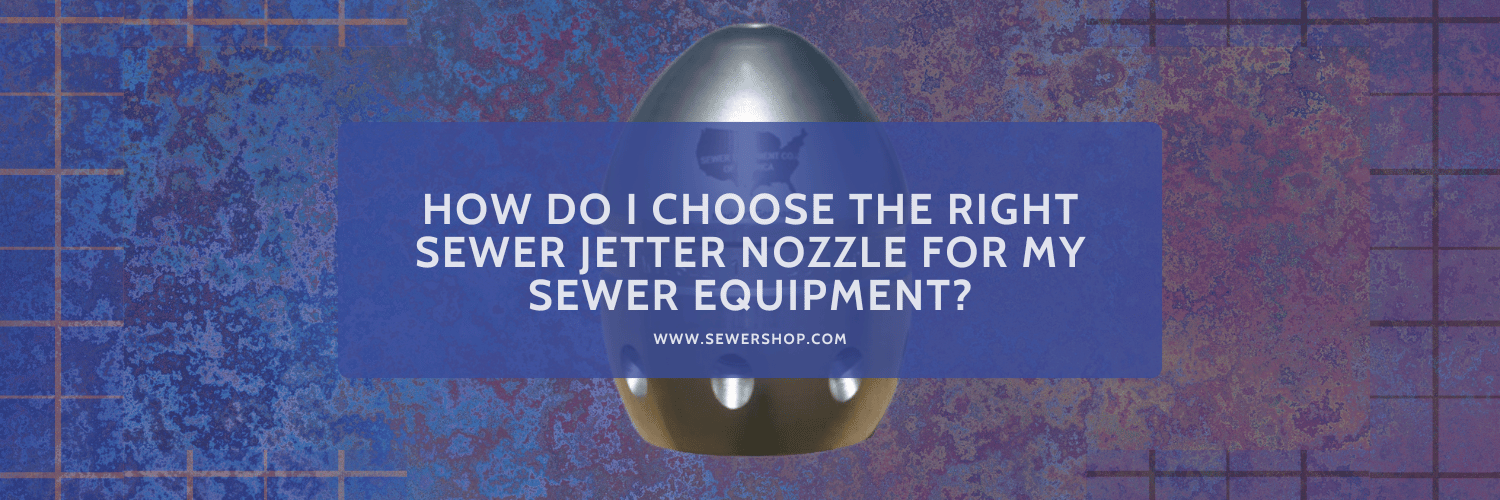
How Do I Choose the Right Sewer Jetter Nozzle for My Sewer Equipment?
Sewer jetter nozzles are essential components of sewer cleaning equipment, used to clear out clogs and blockages in sewer lines. However, with so many different types of sewer jetter nozzles available, choosing the right one for your specific needs can be a challenge. In this blog, we'll explore some key factors to consider when selecting a sewer jetter nozzle.

Pipe Size
The first consideration when choosing a sewer jetter nozzle is the size of the pipe you will be cleaning. Sewer jetter nozzles come in a range of sizes to accommodate different pipe diameters. Choosing the right size nozzle ensures that the water flow is optimized for the specific pipe size, maximizing cleaning efficiency and minimizing the risk of damage to the pipe.
Blockage Type
The type of blockage you are trying to clear is another important factor to consider. For example, if you are dealing with a particularly stubborn blockage or buildup, a nozzle with a more aggressive spray pattern may be necessary to break it up. Conversely, if you are dealing with a more delicate obstruction or want to avoid damaging the pipe, a gentler spray pattern may be more appropriate.
Water Pressure
Another important consideration is the water pressure of your sewer cleaning equipment. Different sewer jetter nozzles are designed to operate at different pressures, so it's important to choose a nozzle that is compatible with your equipment's pressure capabilities. Using a nozzle that requires a higher pressure than your equipment can provide can result in poor performance and potential damage to the nozzle.
Nozzle Design
Sewer jetter nozzles come in a variety of designs, each with its own advantages and disadvantages. Some common nozzle designs include forward-facing, rear-facing, rotary, and oscillating nozzles. Each design is optimized for different cleaning scenarios, so it's important to choose a nozzle that is best suited to your specific needs.
Material
The material from which the nozzle is constructed is also an important consideration. High-quality materials such as stainless steel are more durable and long-lasting, making them a better investment over time. Lower-quality materials may be less expensive initially, but they may wear out more quickly, requiring more frequent replacement.
- Stainless Steel: Stainless steel is a popular material for sewer jetter nozzles due to its strength and durability. It can withstand high water pressures and is resistant to corrosion, making it ideal for use in harsh environments.
- Brass: Brass is another common material for sewer jetter nozzles. It is less expensive than stainless steel, but still offers good strength and durability. However, brass is not as resistant to corrosion as stainless steel, so it may not be the best choice for use in extremely harsh environments.
- Ceramic: Ceramic nozzles are becoming increasingly popular due to their resistance to wear and tear. They are typically coated with a hard, durable material such as tungsten carbide, which helps to protect them from damage and extend their lifespan.
- Plastic: Plastic nozzles are generally the least expensive option, but they are also the least durable. They are best suited for light-duty applications where high pressure is not required.
Choosing the right sewer jetter nozzle is essential to maximizing the effectiveness and efficiency of your sewer cleaning equipment. By considering factors such as pipe size, blockage type, water pressure, nozzle design, and material, you can select a nozzle that is tailored to your specific needs, ensuring optimal performance and longevity.
